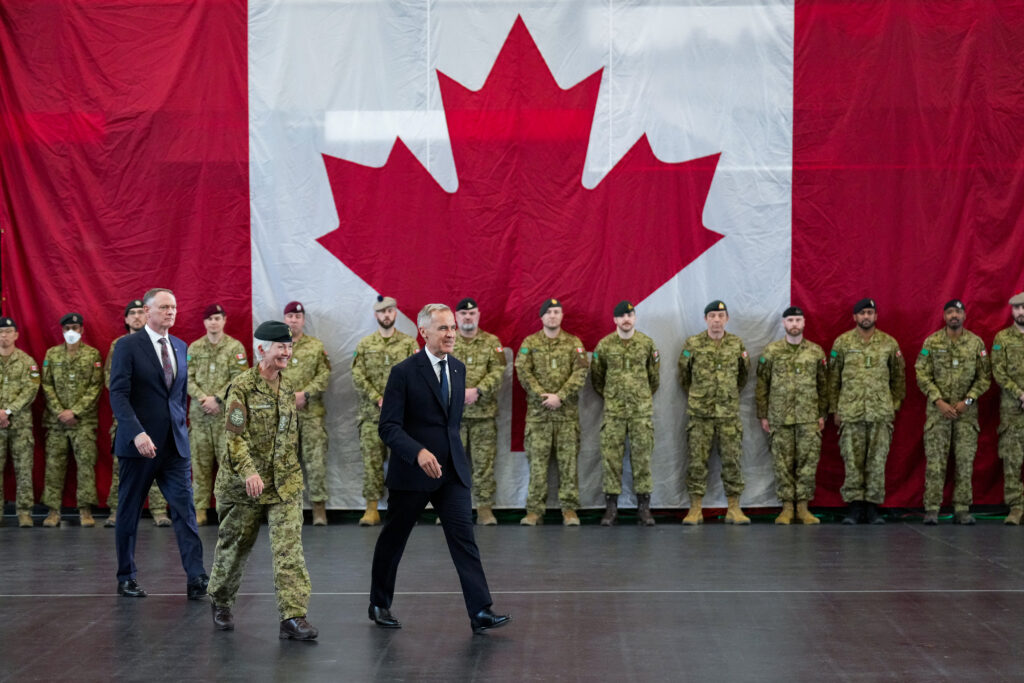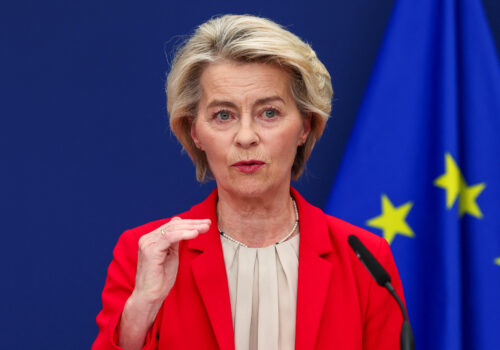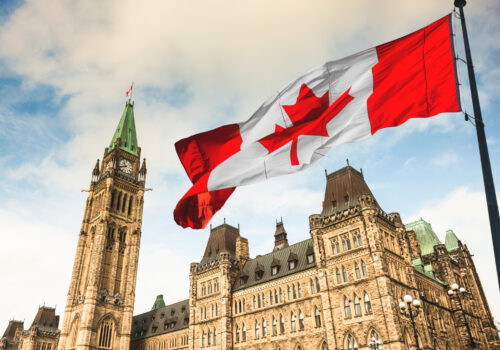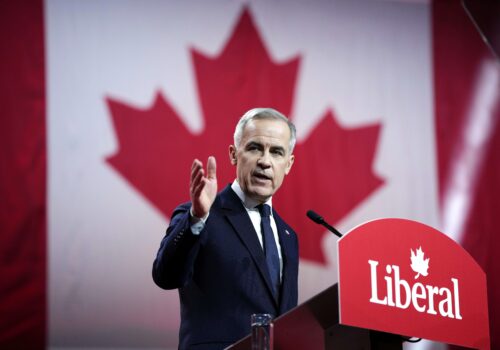It’s not just the money. On Monday, Mark Carney gave his first major defense and security speech as Canadian prime minister. In the speech, Carney pledged that Canada would reach the NATO benchmark of spending 2 percent of gross domestic product (GDP) on defense this year, well ahead of the previous government’s 2032 deadline. While this announcement garnered headlines, less attention went to Carney’s reasoning for the increase, which included both an unraveling international order and an increasingly unreliable United States. What might Carney’s view of the current moment and of Washington mean for the United States? Below, Imran Bayoumi, an associate director with the GeoStrategy Initiative in the Scowcroft Center for Strategy and Security, puts the new spending in its full context.
Why is Carney calling for changes now?
Speaking at the University of Toronto, Carney described the current era as a “hinge moment” in Canada’s history. As “threats from a more dangerous and divided world are unraveling the rules-based international order,” Carney is doing what many leaders of all political stripes in Canada have pledged and failed to do—increase military and defense spending.
Recognizing the increasingly volatile international security environment that Canada finds itself in, Carney announced sweeping plans for the government of Canada to increase its defense spending to the NATO target of 2 percent of its GDP by March 2026, ahead of the goal set by the government of former Prime Minister Justin Trudeau. Canada’s lagging defense spending has long drawn the ire of the United States and other NATO allies and served as a target for US President Donald Trump earlier this year. Carney likely timed this announcement for this weekend’s G7 Summit, during which Trump will travel to Alberta, and in advance of the NATO Summit in the Hague later this month.
Aside from addressing short-term priorities with this month’s summitry, Carney also framed his announcement around the threats to Canada at this moment in history, stating, “a new imperialism threatens. Middle powers must compete for interests and attention, knowing that if they’re not at the table, they’re on the menu.”
What exactly is Canada doing on defense spending?
Canada currently spends 1.37 percent of its GDP on defense, but the low spending numbers do not tell the full story of Canada’s defense woes. Ottawa only has one operational submarine, out of four, and only half of the Canada’s maritime and land vehicles are operational.
Questions surround Canada’s ability to ramp up its domestic defense production at a scale needed to meet Carney’s new goals. The equipment used by the Canadian Armed Forces and Canada’s broader defense production as a whole are closely integrated with the United States. Despite this, Carney has pledged to diversify future defense spending away from an overreliance on the United States and look towards new partners, including Europe, as well as boosting its own capacity for domestic production.
Where will this increased spending go?
In fiscal year 2025-26 alone, the Carney government will invest an additional $6.5 billion across the Department of National Defence (DND), the Canadian Armed Forces, and the Communications Security Establishment (Canada’s signals intelligence agency). The Canadian government aims to increase the number of full-time armed forces members and reservists alongside investing in the civilian workforce. Part of the spending increase will also come from moving the oversight of Canadian Coast Guard from the Ministries of Fisheries and Oceans to the DND. The investment strategy calls for further modernizing Canada’s military capabilities with a focus on the Arctic, such as Canada’s recent acquisition of a new over-the horizon radar system from Australia. To further Canada’s domestic defense production and innovation, the government plans to establish BOREALIS, the Bureau of Research, Engineering, and Advanced Leadership in Science, which will focus on focus on furthering research in frontier technologies such as artificial intelligence and quantum computing.
How should the United States view Canada’s plans?
Washington has already welcomed Ottawa’s announcement, with US Ambassador to Canada Pete Hoekstra posting on X that the plan is “an important step toward strengthening the Alliance and reinforcing our shared security.” However, a key part of Carney’s strategy is to diversify Canada’s defense investments and partnerships away from the United States. The purchase of the JORN radar system from Australia was Canberra’s biggest ever defense export and took the United States by surprise. Ottawa is considering bids from both South Korea and a joint German and Norwegian bid to purchase new submarines. Canada’s planned purchase of eighty-eight F-35 fighter jets from the United States is also being reconsidered, with the DND now potentially looking toward European suppliers.
While Washington will welcome Ottawa’s clear, if long-delayed, commitment to investing in its national defense and security, the era when Canada buys heavily from the United States is likely over. As Carney stated, “it is time for Canada to chart its own path and assert itself on the international stage,” and Washington should not take for granted its potential role in Canada’s defense future.
Further reading
Tue, Jun 10, 2025
Five questions (and expert answers) about the new EU sanctions plan for Nord Stream and Russian banks and oil
New Atlanticist By
Atlantic Council experts break down the details of the European Commission's proposed eighteenth sanctions package against Russia for its war on Ukraine.
Thu, Mar 27, 2025
Canada needs an economic statecraft strategy to address its vulnerabilities
Issue Brief By Kimberly Donovan, Maia Nikoladze, Lize de Kruijf
To address threats from Russia and China and reduce trade overdependence on the United States, Canada’s federal government will need to consolidate economic power and devise an economic statecraft strategy that will leverage Canada’s economic tools to mitigate economic threats and vulnerabilities.
Mon, Mar 10, 2025
Experts react: What Mark Carney means for the US-Canada relationship
New Atlanticist By
As the next prime minister of Canada prepares to take office, Atlantic Council experts look at what’s ahead for Ottawa and its relationship with Washington.
Image: Canada’s Prime Minister Mark Carney walks with the Chief of the Defence Staff Jennie Carignan and Minister of National Defence David McGuinty prior to making a speech about defense and security at Fort York Armoury, in Toronto, Ontario, Canada June 9, 2025. REUTERS/Arlyn McAdorey




